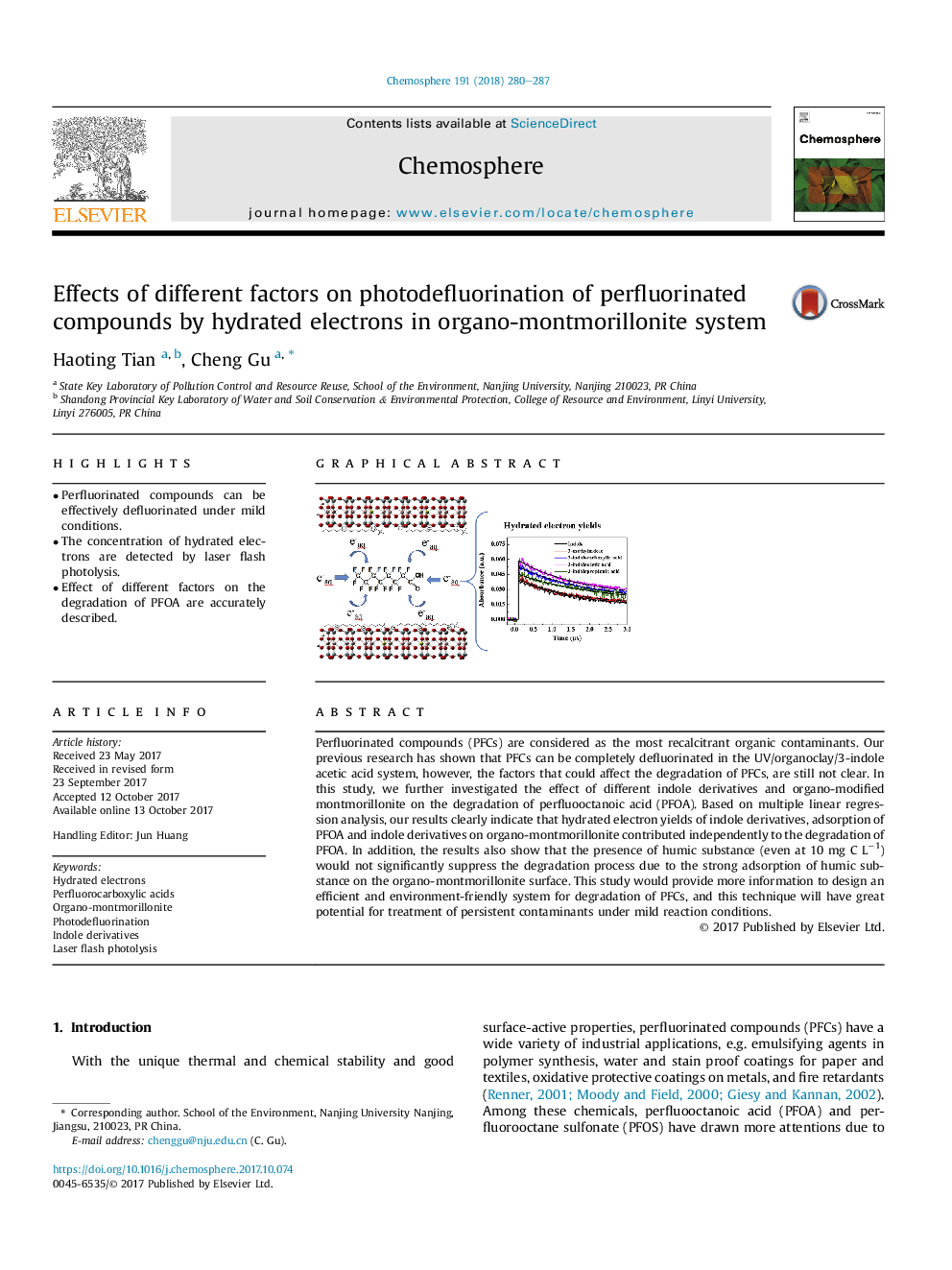| Article ID | Journal | Published Year | Pages | File Type |
|---|---|---|---|---|
| 5745742 | Chemosphere | 2018 | 8 Pages |
â¢Perfluorinated compounds can be effectively defluorinated under mild conditions.â¢The concentration of hydrated electrons are detected by laser flash photolysis.â¢Effect of different factors on the degradation of PFOA are accurately described.
Perfluorinated compounds (PFCs) are considered as the most recalcitrant organic contaminants. Our previous research has shown that PFCs can be completely defluorinated in the UV/organoclay/3-indole acetic acid system, however, the factors that could affect the degradation of PFCs, are still not clear. In this study, we further investigated the effect of different indole derivatives and organo-modified montmorillonite on the degradation of perfluooctanoic acid (PFOA). Based on multiple linear regression analysis, our results clearly indicate that hydrated electron yields of indole derivatives, adsorption of PFOA and indole derivatives on organo-montmorillonite contributed independently to the degradation of PFOA. In addition, the results also show that the presence of humic substance (even at 10 mg C Lâ1) would not significantly suppress the degradation process due to the strong adsorption of humic substance on the organo-montmorillonite surface. This study would provide more information to design an efficient and environment-friendly system for degradation of PFCs, and this technique will have great potential for treatment of persistent contaminants under mild reaction conditions.
Graphical abstractDownload high-res image (359KB)Download full-size image
